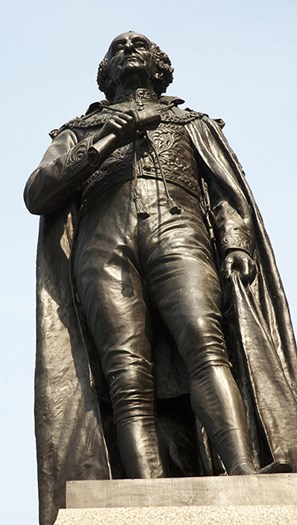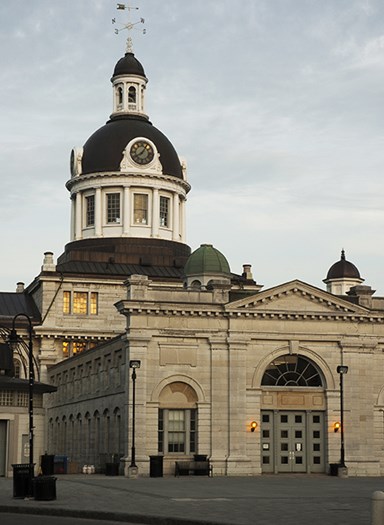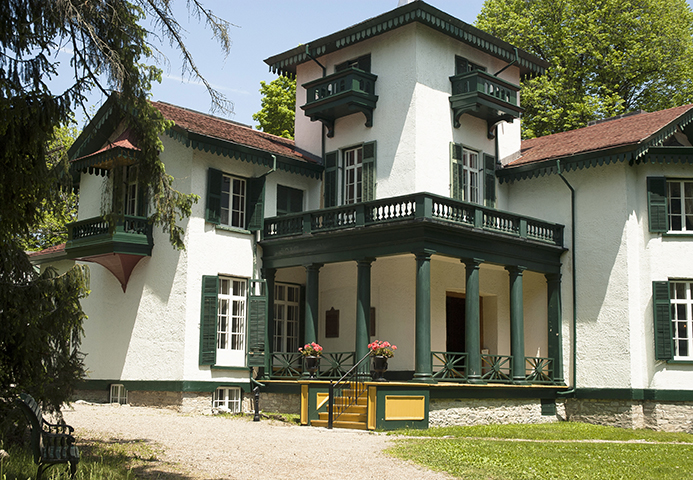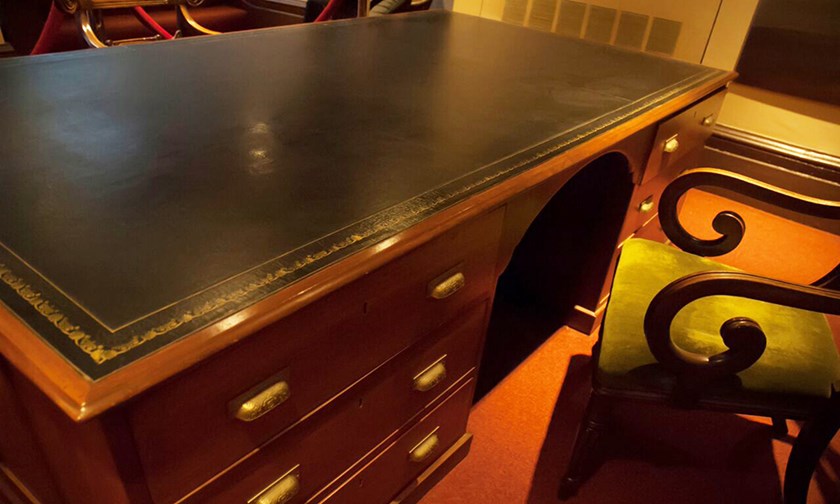KINGSTON, ON - We were in this city’s historic City Hall when it really hit me. Sure, I knew that Canada’s first Prime Minister, Sir John A. Macdonald, had made his mark in Kingston, and had lived here for years. But when I saw his old desk, (a partners’ desk) carefully preserved in City Hall, I finally had tangible proof of his having lived and worked here.
Along with being the stomping grounds for Sir John A. Macdonald, Kingston was once briefly the capital of Canada. After 1832, Kingston was linked to Ottawa by the Rideau Canal, and it remains the gateway to the Thousand Islands, a stunning series of islands between Lake Ontario and the St. Lawrence River.
Kingston has a lot to be well known for. Members of its Royal Military College were instrumental, back in the mid-60s, in promoting and creating Canada’s current flag, the Maple Leaf. Furthermore, in a country not known for fortresses, one of Canada’s best-known ones, Fort Henry, is located here. And let’s not forget Queen’s, Canada’s oldest university.
Sir John A., as he is popularly known, became Canada’s first prime minister and served in that role for a total of 16 years. He is known by many Canadians as the most important Father of Confederation, and has graced the Canadian $10 bill for decades. He has countless roads, bridges and airports named in his honour.


Left: Statue of Sir John A looms large on the streets of Kingston. Right: Kingston once served as Canada's capital..
And because he was a resident of Kingston for so long, there are references galore to his life here.
At Bellevue House, one can visit the largest house that Macdonald inhabited in Kingston. He and his family moved there in 1848 in the hope that living in the country and breathing country air would improve his wife’s health. Bellevue is a beautiful Italianate villa, complete with design and styles from the Victorian era. It has been preserved as it was in 1848, including extensive grounds, an orchard, and a kitchen garden. There is a giant red oak there, said to have been planted the same year of Macdonald’s birth, 1815.
There are many houses in Kingston associated with Macdonald, most of which you cannot visit. It seems he moved often and was always renting. One wag said it would be easier to fix plaques “Sir John A. Macdonald did NOT live here” across town than affix plaques to those places he did reside.
Sir John A.’s parish church, St. Andrews is still going strong, and you can view the stained glass that he paid for at the Catholic church of St. Mary’s. What is amazing is that in Kingston so many places directly connected with Sir John A. are still up and operating, a tribute to the thoughtful heritage preservation here.
Now, back to the partners’ desk I saw in City Hall. This unique, oversized desk is designed for two people. Both business partners face each other and share a very wide and deep desktop. They have built-in cabinets to the left and the right of where they would sit. Our interpretive guide indicated that the side Macdonald would have used had pigeonholes to keep his bottles in — it is common knowledge that Sir John A. liked to imbibe. There is even one famous incident where he appeared to be drunk in the House of Commons.
Coincidentally, one of his law offices has now been converted into Sir John’s Public House. It is an unpretentious kind of place that serves up pub fare, including that modern-day Scottish pub specialty: deep-fried Mars bar! According to Tim Archibald of the pub, “there is little doubt that discussions concerning the dream of a confederated Canada took place in this building”.


Left: One of the homes he lived in. Right: The desk Sir John A worked at.
What I really like about Kingston is that so much of the old town has been preserved. And, because it is relatively small, almost any place can be reached on foot. We could easily walk from our residence at Queen’s University along Lake Ontario into the historic centre of town, where we passed the Murney Tower, now a museum, a military tower built for defence, but never attacked. Interestingly enough, the huge Fort Henry, at the other end of town was never attacked either.
You have a feel for where everything is located after just a day. Chez Piggy restaurant, founded by local Zalman Yanovsky of the Lovin’ Spoonful, has become an institution in Kingston and his daughter’s Pan Chancho Bakery/Restaurant sells the kind of eclectic choices that reminds one this is a university town.
Another must visit in Kingston for those interested in Macdonald would be his gravesite at the Cataraqui cemetery. As cemeteries go, this place is a beauty. It is built on a highly forested area with rolling hills, and is full of beautiful monuments. What is refreshing, though, is the utter simplicity of Sir John A. Macdonald’s gravestone. A single cross with a simple message: At Rest.
It is hard to be in Kingston for more than a few days without being intrigued by the dozens and dozens of wind turbines that appear to be working in the middle of Lake Ontario. They are in fact, located on Wolfe Island, where the island lifestyle hasn’t changed in hundreds of years, and the land is still mainly farm country. There may not be a lot to see there historically speaking, but it is a beautiful car or bicycle drive.
Close to where you take the Wolfe Island car ferry, boats for the Thousand Islands dock. You can take a sunset cruise and wonder how splendid it would be to have a cottage amongst these quiet waters, so perfectly isolated, yet so very close to a town jam packed with Canadian history.
About the Author
While still a teenager, Bruce Sach's travelling career started off badly. After being dragged by well-meaning parents onto a plane, he reluctantly took his seat only to have a flight attendant drop a bowl of salad on his head. He realized he should have stayed home. Years later, home (Edmonton) had shifted to Ottawa and he came to the conclusion that travel was an okay thing to do. Countless airplane meals and salad bowls later, Bruce is equally at ease in an Indonesian phinsi or viewing calving Greenlandic icebergs, and is able to adapt to most any locale. Every new destination increases his interest in visiting and reporting.